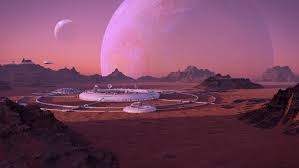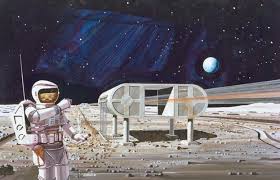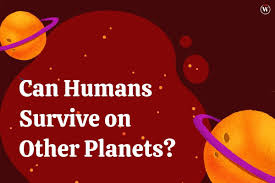The question of whether humans can live on other planets is no longer just the stuff of science fiction. With rapid advances in space technology, a growing understanding of planetary science, and a renewed global interest in space exploration, scientists and engineers are seriously investigating how—and if—we can make our home beyond Earth. This article dives into the science of space colonization, the challenges we face, and the prospects for human life on other worlds.

Why Consider Living on Other Planets?
Our home planet, Earth, is the cradle of humanity, but it is not immune to catastrophic risks. Climate change, overpopulation, depletion of natural resources, and the potential for natural or man-made disasters all raise the question: Should humanity become a multi-planetary species?
Prominent figures like Elon Musk and institutions like NASA and the European Space Agency (ESA) argue that colonizing other planets isn’t just an ambitious dream—it’s a necessary insurance policy for the survival of our species. Space colonization could also drive technological innovation, foster international cooperation, and inspire future generations.
What Makes a Planet Habitable?
To support human life, a planet must meet several critical criteria:
- Atmosphere: A breathable atmosphere with oxygen or a way to generate and maintain one.
- Water: Liquid water is essential for drinking, agriculture, and industrial processes.
- Temperature: The planet must be within the “habitable zone”—the range of distance from a star where liquid water can exist.
- Gravity: The gravity should be sufficient to support human health but not so intense as to cause problems.
- Radiation Protection: A magnetic field or thick atmosphere is ideal to shield against harmful space radiation.
- Availability of Resources: Essential resources like minerals, building materials, and potentially food sources must be accessible.
Mars: The Prime Candidate
Among all celestial bodies in our solar system, Mars stands out as the most viable option for human colonization. Here’s why:
- Mars has a 24.6-hour day, similar to Earth’s.
- It has seasons due to its axial tilt.
- Polar ice caps contain water.
- There is some evidence of subsurface liquid water.
- The planet has vast open plains suitable for potential construction and agriculture in controlled environments.
However, Mars is not without its challenges:
- Its atmosphere is 100 times thinner than Earth’s and composed mainly of carbon dioxide.
- Temperatures can drop to -125 degrees Celsius at night.
- Surface radiation levels are dangerously high without Earth-like protection.
- The planet’s gravity is only about 38% of Earth’s, and the long-term effects of living in reduced gravity are unknown.
Terraforming Mars: Turning Red into Green
Terraforming is the hypothetical process of modifying a planet’s environment to make it habitable for Earth-like life. For Mars, proposed terraforming strategies include:
- Releasing greenhouse gases to warm the planet.
- Using orbital mirrors to reflect sunlight and raise temperatures.
- Melting the polar ice caps to release CO2 and water vapor.
- Introducing genetically modified organisms to produce oxygen.
While these ideas are compelling, they are currently beyond our technological capabilities and would require centuries—or even millennia—to achieve significant results.

Life Support and Habitats in Space
Since transforming an entire planet may not be feasible in the near term, the focus shifts to creating self-contained, life-sustaining habitats. These could be:
- Domed Cities: Enclosed habitats with controlled air pressure, temperature, and atmosphere.
- Underground Bunkers: Protecting colonists from radiation and meteorites.
- Inflatable Modules: Lightweight, transportable habitats that expand once deployed.
Each habitat would require a closed-loop life support system, including oxygen generation, carbon dioxide scrubbing, water recycling, and food production, possibly through hydroponics or aquaponics.
Other Candidates: Beyond Mars
While Mars garners most attention, several other celestial bodies are under consideration:
- The Moon: Its proximity makes it ideal for testing technologies and building launch stations.
- Europa (moon of Jupiter): Believed to have a subsurface ocean beneath its icy crust.
- Titan (moon of Saturn): Has a thick atmosphere and liquid methane lakes.
- Exoplanets: Planets outside our solar system in habitable zones of their stars, such as Proxima Centauri b, are promising but extremely far away.
Each of these locations comes with its own extreme conditions, requiring unique technological and biological solutions.
Health and Psychological Challenges
Living on another planet isn’t just about surviving the environment. Human health and psychology play a crucial role:
- Microgravity Effects: Prolonged exposure to low gravity can weaken bones, muscles, and cardiovascular systems.
- Radiation Exposure: Increases the risk of cancer, neurological disorders, and reproductive issues.
- Isolation and Confinement: Can lead to depression, anxiety, and interpersonal conflicts.
- Communication Delays: Depending on the distance, messages between Earth and other planets can take minutes to hours.
NASA and other agencies are conducting long-duration spaceflight studies and simulations (e.g., Mars analog missions on Earth) to better understand and mitigate these risks.
The Role of Robotics and AI
Robots and artificial intelligence (AI) are expected to play a major role in space colonization:
- Construction: Robots can build habitats before human arrival.
- Exploration: Drones and rovers can map terrain and gather data.
- Maintenance: AI systems can monitor life support systems and manage resource usage.
- Medical Support: AI-assisted diagnostics and robotic surgery could be essential in remote locations.
The Economic and Ethical Dimensions
Colonizing other planets raises important ethical and economic questions:
- Who owns space? Current treaties state that space is the province of all humanity, but commercial interests are growing.
- Cost: Space colonization requires enormous investment. Who funds it, and who benefits?
- Planetary Protection: Introducing Earth microbes to other planets could harm potential native ecosystems or contaminate scientific discoveries.
-
- 9281276151
-
These questions must be addressed as humanity moves closer to becoming a spacefaring civilization.

Conclusion: A Long Road Ahead, but a Road Worth Taking
Can humans live on other planets? The answer is: potentially, but not easily. It will take decades of innovation, international collaboration, and immense human effort to overcome the technical, biological, and psychological challenges of space colonization.
Mars is currently our best bet, with the Moon serving as a valuable stepping stone. However, turning these visions into reality requires commitment, funding, and a willingness to confront the unknown.
While we may not see large-scale space colonies in our lifetime, the journey has already begun. And as we push the boundaries of science and exploration, we also push the limits of what it means to be human. Our curiosity and resilience—fueled by science—may one day take us to the stars.
Read more:https://nfds.xyz/wp-admin/post.php?post=37&action=edit



